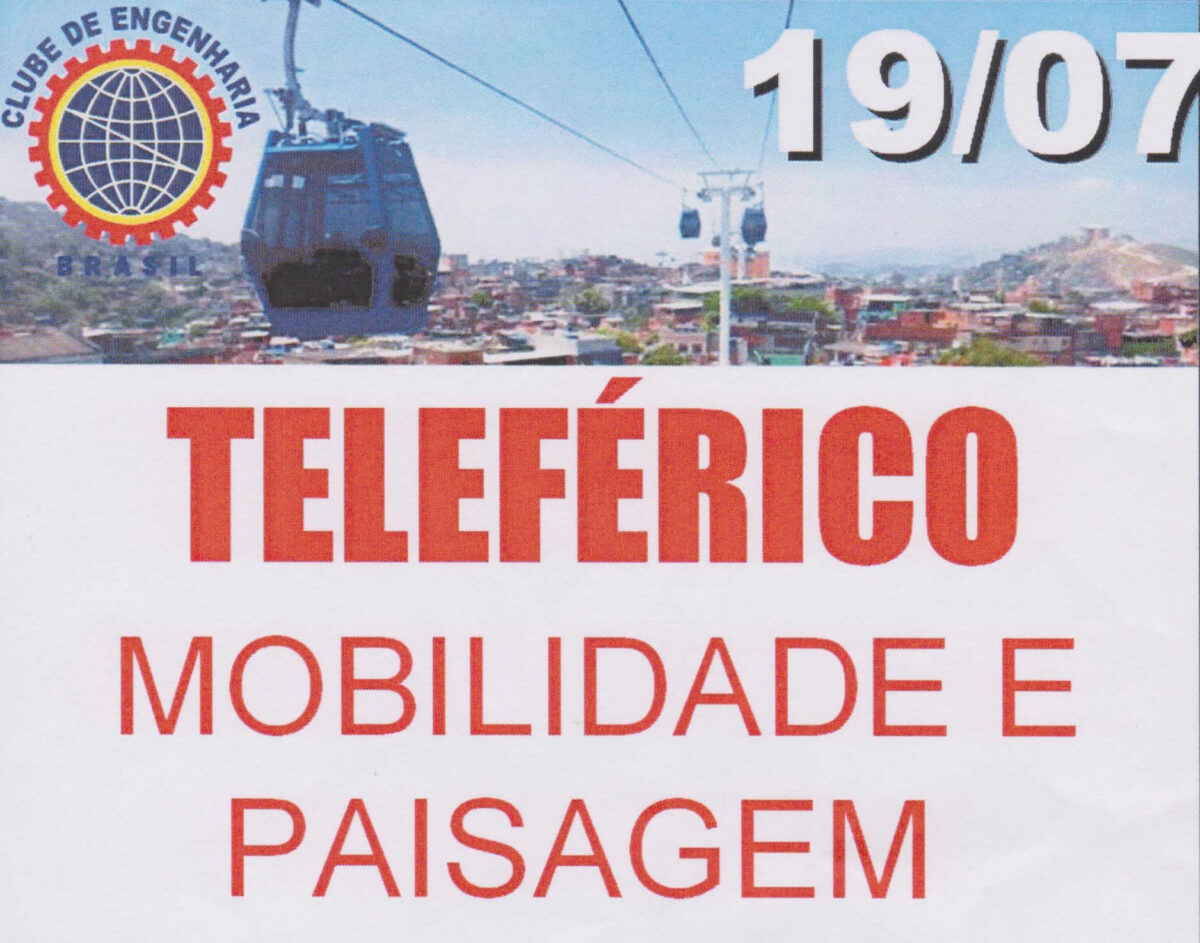This article was written in collaboration with Rocinha sem Fronteiras, S.O.S., Rocinha Saneamento, Salve a Rocinha and Mundo Real by journalist Catherine Osborn
Over a hundred citizens gathered at the Clube de Engenharia on Friday afternoon for a discussion forum about cable cars and urban mobility, especially in the context of favela upgrades currently occurring in Rio. The focus was around the planning process for the second phase of the national PAC infrastructure program, slated to begin construction in Rocinha later this year, and recently presented to the community for the first time. PAC planners hope to crown Rocinha’s next phase of upgrades with a cable car, but most attendees of the forum—who included Rocinha residents, engineers, and residents of other favelas who have studied transit interventions there—say “not so fast.”
One of the great strengths of the first phase of PAC upgrades in Rocinha was the participatory process through which it was planned, with many meetings with residents ahead of time asking them what their preferences would be. As with the PAC I in Rocinha, the plans for PAC II begin with detailed maps of the area presenting transit channels and elevation; these maps were presented by an EMOP representative at the start of Friday’s event. The representative then went on to sketch out the future route of Rocinha’s cable car, and heard resistant comments from the back of the room. One resident pointed out that people from Rocinha were not consulted this time around about whether they wanted the cable car—and that a majority of them wanted public money to be spent on something else. “Sanitation yes, cable car no,” had been the slogan of a peaceful protest of thousands that united Rocinha and Vidigal residents on June 25, and many attendees of Friday’s event questioned the idea of prioritizing public spending for a cable car when Rocinha had grave public health issues that investments in sanitation could take important steps to address. PAC I architect Luiz Carlos Toledo said that on the topic of health, people in wheelchairs such as himself would not be able to travel via cable car because of its quick boarding system.
“Sanitation yes, cable car no!”
Engineer Raul Cahet presented some financial research he had done about the only completed cable car in a Rio favela, that in Complexo de Alemão. Full data on the project is not open to the public, but simply using the internet TK was able to put together some budget and reach information that included the fact that under ten percent of Complexo de Alemão residents use the cable car, roughly the same number of residents who had to be relocated in order for the car to be built.
Alan Brum Pinheiro of the NGO Raizes em Movimento of Complexo de Alemão spoke about the experience of doing social work in the community before and after the installation of the cable car. He read from a study conducted by IPEA that pointed to the abandonment of other public services in the area in favor of maintenance work on the cable car. [Name] of Providência, where there is currently a cable car under construction, spoke of how its arrival in the community had so far caused more removals than anything else, and that residents were not consulted about where it would be installed.
Santa Marta resident and iBase director Itamar Silva spoke about the experience of having a different kind of mobility intervention in a favela: an inclined plane, in which a passenger car moves upward on a track. “Of all the different state interventions in Santa Marta, I can say that the inclined plane was one of the best,” he said, noting that its extra space allowed residents to transport purchase, bicycles, and other equipment along with them. An inclined plane was not an option presented to residents of Rocinha in the planning stages of the PAC 2, but many forum attendees expressed interest in it, especially because it would cost far less to install than a cable car and be less of a tourist attraction. Silva also emphasized the importance of giving each individual resident full access to facts about projects like these so that they could form their own opinions.
José Martins of Rocinha Sem Fronteiras reiterated the importance of a critical and active voice from Rocinha residents, especially when they could see similar results of transit upgrades being played out in other favelas in the city. He noted some contradictions in the city’s planning policies for Rocinha, such as the fact that the city once mandated the removal of families to Laboriaux, but later said that it was a risk area. Martins described two previous municipal masterplans that included Rocinha and noted that none of them listed a cable car as a priority.
After four hours of statements from two organized tables, over an hour and a half of debate followed. One Rocinha residents said the community should be happy it was getting investment at all, and should take whatever projects are proposed, but another answered from the audience that the cable car would cost 700 million Reais, and residents were organized enough in order to get the money to go to something more important.
Event moderator Uiara Martins said that the event had been organized because the Engineering Club had looked into the PAC II process and to them, it seemed like informed planning was not occurring. Jose Ricardo Duarte of Laboriaux, in his closing comments, thanked the Engineering Club for providing the space for debate, and stressed the importance of the debate continuing with the presence of technically-skilled professionals who could give unbiased commentary along the way.

